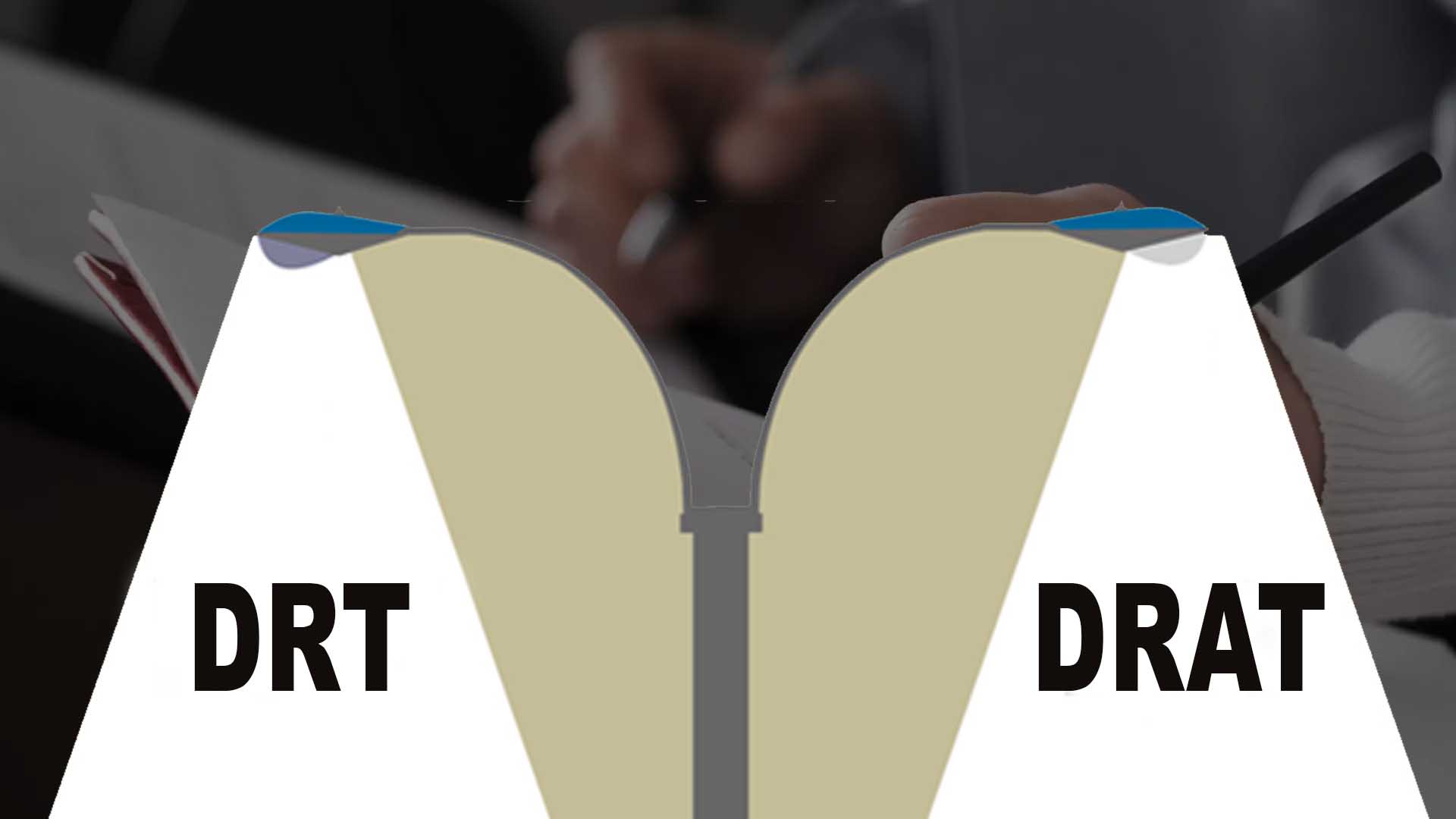DRT / DRAT

DRT / DRAT
The Debts Recovery Tribunals (DRTs) and Debts Recovery Appellate Tribunals (DRATs) were established under the Recovery of Debts and Bankruptcy Act (RDB Act), 1993 with the specific objective of providing expeditious adjudication and recovery of debts due to Banks and Financial Institutions.
At present, 39 Debts Recovery Tribunals (DRTs) and 5 Debts Recovery Appellate Tribunals (DRATs) are functioning across the country. Each DRT and DRAT are headed by a Presiding Officer and a Chairperson respectively.
Debt Recovery Tribunals (DRT) , Debt money recovery in India refers to the process of obtaining payment for outstanding debts from individuals or businesses. In India, there are various laws and regulations in place to facilitate the recovery of debt, including the Debt Recovery Tribunal (DRT) Act, the Securitization and Reconstruction of Financial Assets and Enforcement of Security Interest (SARFAESI) Act, and the Recovery of Debts Due to Banks and Financial Institutions (RDDBFI) Act.
The Debt Recovery Tribunal (DRT) is a specialized court that deals with cases related to recovery of debts from banks, financial institutions, and other creditors. The SARFAESI Act, on the other hand, allows banks and financial institutions to take possession of and sell secured assets of defaulting borrowers in order to recover their dues.
The RDDBFI Act provides for the recovery of debts due to banks and financial institutions through various means such as attachment and sale of assets, arrest and detention of the debtor, etc.
In India, there are also several private debt collection agencies that assist banks, financial institutions, and other creditors in recovering their outstanding debts. These agencies typically work on a commission basis, and use various methods such as letters, phone calls, and legal action to recover the debt. However, it is important to note that private debt collection agencies are regulated by the Reserve Bank of India (RBI) and must adhere to certain guidelines set forth by the central bank.
Debt money recovery in India is a process that is regulated by various laws and regulations to ensure that creditors are able to recover their outstanding debts in a fair and efficient manner. The Debt Recovery Tribunal, SARFAESI Act, and RDDBFI Act are some of the important legal framework in place to facilitate the recovery of debt. Additionally, private debt collection agencies also play a crucial role in the recovery of debt.
Legal Process of Debt Recovery:
The legal process of debt money recovery in India begins with the creditor, such as a bank or financial institution, filing a case with the Debt Recovery Tribunal (DRT) or a civil court. The case is then heard by a judge, who will review the evidence presented by both the creditor and the debtor. If the judge finds that the debt is valid and the debtor is indeed liable to pay the amount, an order is passed in favour of the creditor.
Once the order is passed, the creditor can take various legal actions to recover the debt, such as attachment and sale of assets, arrest and detention of the debtor, etc. The Securitization and Reconstruction of Financial Assets and Enforcement of Security Interest (SARFAESI) Act also allows banks and financial institutions to take possession of and sell secured assets of defaulting borrowers in order to recover their dues.
In addition to the legal process, there are also various out of court settlements that can be made between the creditor and the debtor. These settlements are typically made through negotiation and mediation and involve the debtor paying off the debt in instalments over a period of time.
It is important to note that the legal process of debt money recovery in India can be time-consuming and can take several months or even years to be resolved. Additionally, the process can be costly for both the creditor and the debtor, which is why out of court settlements are often preferred. However, the legal process of debt money recovery in India is an important mechanism that ensures that creditors are able to recover their outstanding debts and that debtors are held accountable for their financial obligations. Types of Debt Recovery Schemes Available Under Debt Recovery Law:
There are several types of debt recovery schemes available in India to assist individuals and businesses in repaying their outstanding debts.
One common type of debt recovery scheme is the debt consolidation loan. Under this scheme, the individual or business takes out a single loan to pay off all their outstanding debts. This loan typically has a lower interest rate than the individual debts and can make it easier for the borrower to manage their payments . Another type of debt recovery scheme is the debt management plan. Under this scheme, a debt management company works with the individual or business to develop a plan to repay their debts over a period of time. The debt management company may also negotiate with the creditors on behalf of the borrower to reduce the interest rate and monthly payments.
Debt settlement is another type of debt recovery scheme. In this scheme, the debt management company negotiate with the creditors to settle the debt for a lesser amount than the full amount owed. This type of scheme is usually for the individuals who have a significant amount of debt and unable to pay in full
The government of India also have provided a Debt Relief Scheme for Micro, Small and Medium Enterprises (MSMEs) affected due to the COVID-19 pandemic. This scheme allows MSMEs to get relief from pending interest, principal or both on term loan and working capital loan.
In conclusion, There are several debt recovery schemes available in India that cater to different needs, such as debt consolidation loans, debt management plans, debt settlement and Government schemes. These schemes can make it easier for individuals and businesses to manage their debts and repay them over time. It is important to carefully consider the options and consult a financial advisor before choosing a debt recovery scheme.
Legal Remedies Available Under Debt Recovery Law
Debt Recovery Lawyer (DRT Lawyer)_Legal Remedies Available Under Debt Recovery Law
In India, there are several legal remedies available under law for debt recovery cases. Some of the key remedies include:
1. Filing a suit for recovery: A creditor can file a suit for recovery in a court of law against the debtor to recover the outstanding debt. This can be done under the Civil Procedure Code, 1908.
2. Issuing a legal notice: A legal notice can be issued to the debtor, demanding payment of the outstanding debt. If the debtor fails to make payment within the notice period, the creditor can proceed to file a suit for recovery.
3. Attachment of assets: If the debtor has assets that can be attached, the court can order the attachment of those assets to secure the debt. This can be done under Order 38 of the Civil Procedure Code, 1908.
4. Garnishee proceedings: If the debtor has funds in a bank account or is due to receive a sum of money from a third party, the court can order the bank or the third party to pay the debt directly to the creditor. This can be done under Order 21 of the Civil Procedure Code, 1908.
5. Decree for recovery of possession: If the debt is related to a property, the court can pass a decree for recovery of possession of the property in favour of the creditor. This can be done under Order 39 of the Civil Procedure Code, 1908.
6. Arrest and detention of the debtor: In certain cases, if the debtor fails to pay the debt despite court orders, the court can order the arrest and detention of the debtor. This can be done under Order 21 of the Civil Procedure Code, 1908.
7. Insolvency and Bankruptcy Code, 2016: In case of corporate debtors, the remedy of corporate insolvency resolution process under the Insolvency and Bankruptcy Code, 2016 can be initiated by the financial creditors.
It's important to note that the remedy selected will depend on the specific circumstances of the case and the nature of the debt. In addition, these are the major legal remedies available and there might be other remedies based on the type of debt, jurisdiction and other factors.The RDB Act, 1993 provides for establishment of Debts Recovery Tribunals (DRTs) with original jurisdiction and Debts Recovery Appellate Tribunals (DRATs) with appellate jurisdiction, for expeditious adjudication and recovery of debts due to banks and financial institutions, insolvency resolution and bankruptcy of individuals and partnership firms and connected matters therewith.The Act aims to safeguard the interest of banks and financial institutions as lenders, while not discouraging borrowers.The Tribunals have not yet commenced taking up insolvency resolution and bankruptcy matters as the related provisions are not yet in force.The Act is applicable to cases where the amount of debt due to any bank or financial institution defined under the Act or a consortium of banks or financial institutions is Rs.20 lakh or more.
The Recovery of Debts and Bankruptcy Act, 1993 (RDB Act) provides speedy redressal to lenders and borrowers through filing of Original Applications (OAs) in Debts Recovery Tribunals (DRTs) and appeals in Debts Recovery Appellate Tribunals (DRATs).
The Securitisation and Reconstruction of Financial Assets & Enforcement of Security Interest Act, 2002 (SARFAESI Act) provides access to banks and financial institutions covered under the Act for recovery of secured debts from the borrowers without the intervention of the Courts at the first stage. Securitisation Appeals (SAs) can be filed with the DRTs by those aggrieved against action taken by secured creditors under the SARFAESI Act.
The e-DRT project has been implemented in all DRTs and DRATs. This project aims to bring in improved access, efficiency and transparency. e-DRT provides access to e-filing, e-payment of fees, cause list generation and a case information system that enables viewing of case status, orders and judgments.


